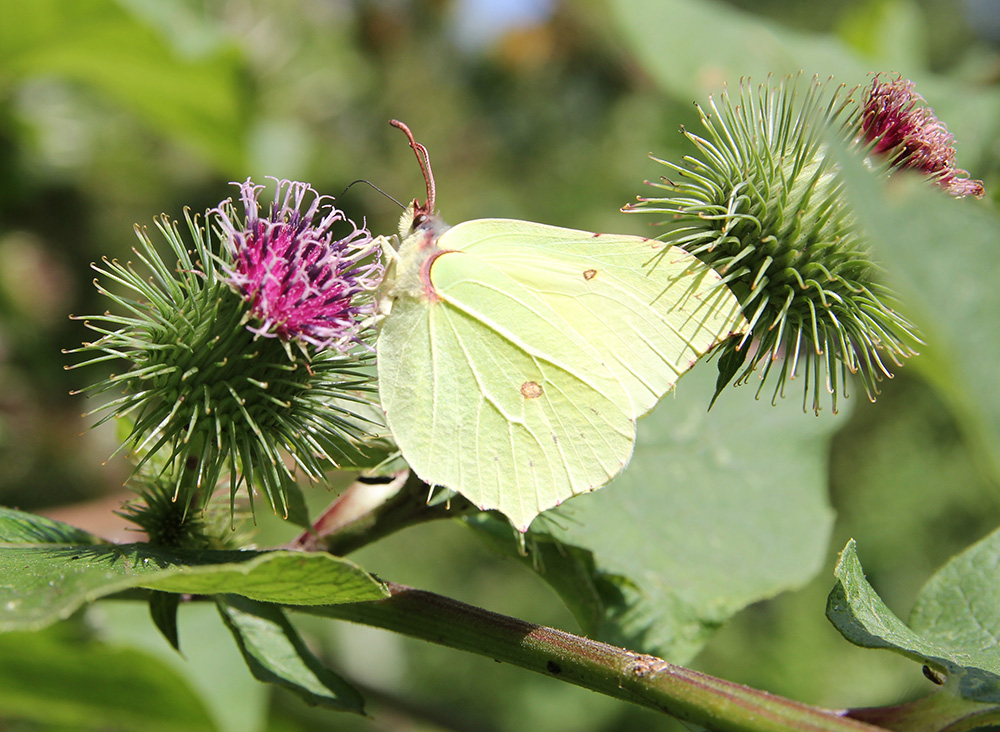The mid July sunshine had brought out a profusion of West Sussex butterflies including the species commonly thought to be responsible for the name "butterfly". The word is derived from "butter-coloured fly" which describes the sunny yellow of the male Brimstone butterfly. The Brimstone
(Gonepteryx rhamni) is one of several of England’s butterflies that emerge in May. June can be butterfly-sparse and then there is a “second generation” emergence in the middle of the summer.
I was out with my camera during butterfly “high season” intent on catching some close-ups. One of my favourites is the little Gatekeeper
Pyronia tithonus with eyes on the wings and a rich orange colour. The challenge though is that when the light is bright and best for capturing the lovely golds and russets in the wings, the warmth also stimulates the insects into skittish hyperactivity so they are difficult to stalk. Yet if a cloud covers the sun and consequently the butterflies grow more sluggish, the resulting photographs are dull, orange turns brown and the detail of the marvellous segmented antennae and the fine body hairs is muted. It takes patience.
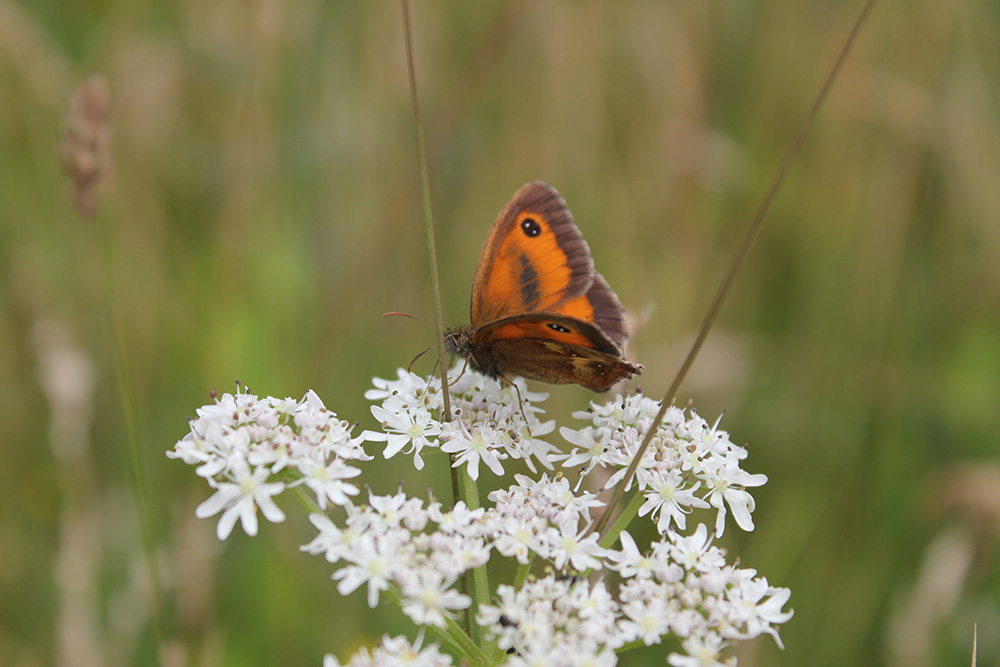 |
| The male Gatekeeper has dark moustaches on his forewings |
I was down on my knees in a brambly patch with a handsome Brimstone in my sights. I wanted to capture his exquisite wing shape, designed to make him look no more appetising than a leaf. I could see the intricate network of veins in his gorgeous butter-yellow wings. He started to unroll his proboscis to drink from a thistle flower. That purple and his yellow were going to make a stunning photo. But then I registered some shrieking. Turning my head spooked the Brimstone and he flew off. I got up and started to walk towards the commotion. It was more than one voice. I guessed it was at least three birds, probably youngsters shouting for food.
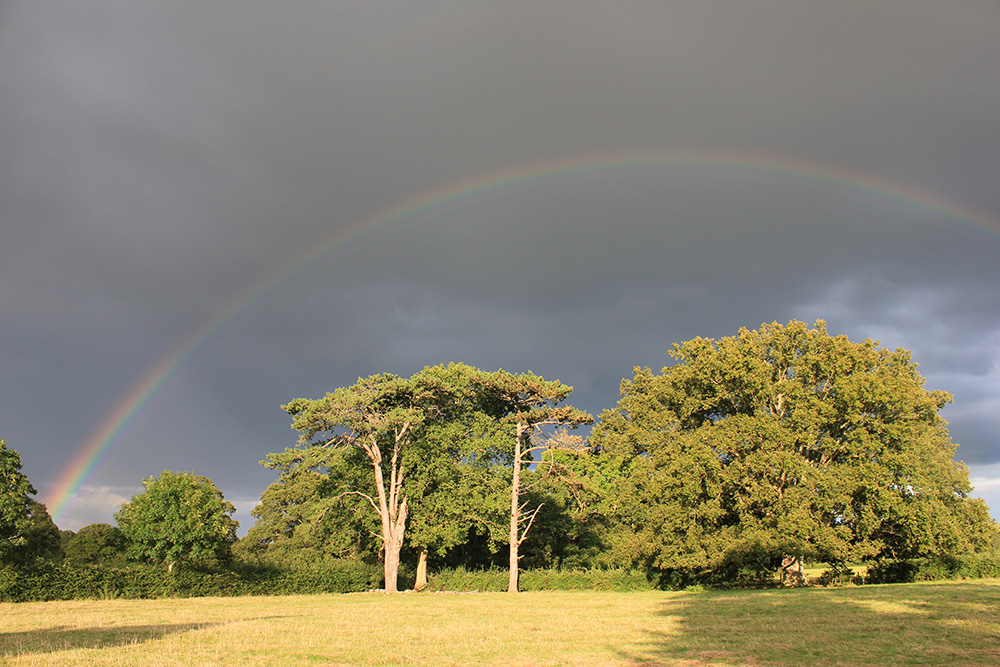
The cries drew me to an ancient pine. Two winters ago, a great branch comprising maybe a third of the tree, had broken off. The calls came from somewhere in the scar that remained half way up the still-living tree. My binoculars found a kestrel apparently keeping watch from the top of the broken limb, but the cries came from below her. I scanned down and in a semicircular hole in the trunk I made out a huddle of feathers and several eyes.
Over the next minutes I watched restless movement inside the hole and decided there were three birds inside. Two were definitely fluffy but the third was either an adult or ready to fledge. I went to fetch a long lens and tripod and settled under a huge oak tree thinking I’d easily photograph an adult flying in and feeding the chicks. I was a long way from the nest but over the course of the next hour I began to realise my presence was worrying the adult kestrels. This seemed odd given the terrific shrieking that had draw my attention to the nest and which continued unabated. The adults came and went and I swatted away flies attracted by the numerous cow-pats in the vicinity. I tried to get more out of sight but sat on thistles and got stung by nettles. I was no less visible. Every so often I realised a kestrel had silently flown close and was watching me intently. Perhaps my telephoto lens reminded the adult of a rifle.
I started to feel guilty, worrying that the chicks were going hungry because of me. I decided I’d leave soon. Then there was the sound of an animal approaching through the muddle of nettles and brambles around me. I guessed it could be a weasel. I wondered if I could wrestle the camera off the tripod and swing it around to snap whatever it was that was creeping up on me. I was excited, thinking I’d get a close up portrait of a shy British mammal. I considered changing to a shorter lens. The stalker came closer.
Then the second I looked behind me - towards the weasel - the sounds from the kestrel family changed and I turned back to see an adult delivering a small offering to the chicks. The adult had swept in and delivered lunch the moment I’d stopped watching the nest. I rapid-fired the camera on sports-mode. There was mayhem inside the nest hole as the chicks fought over the prey item and it was ripped to bloody pieces.
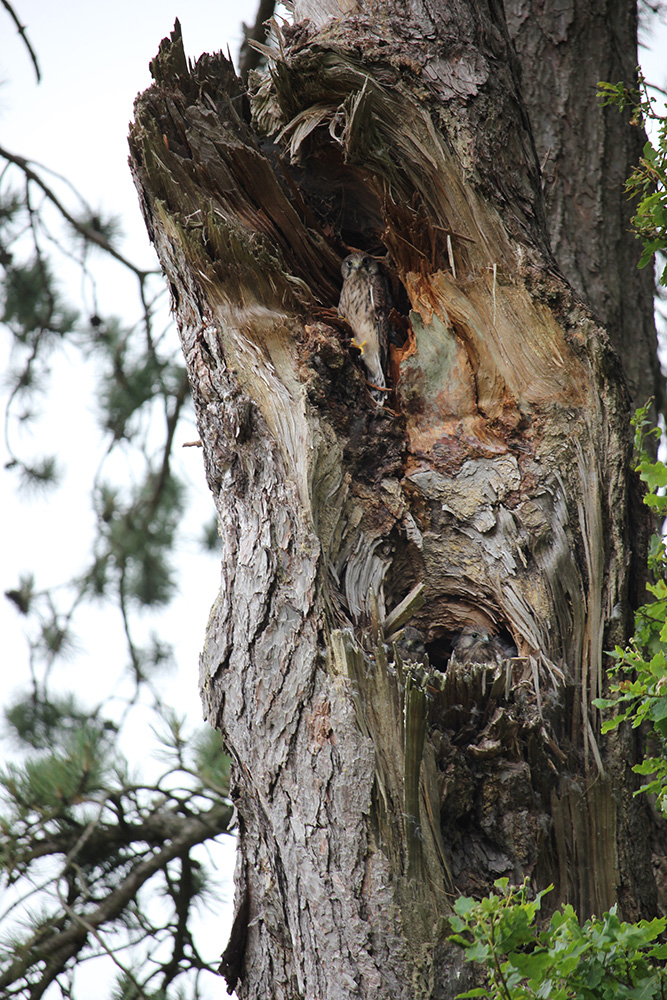
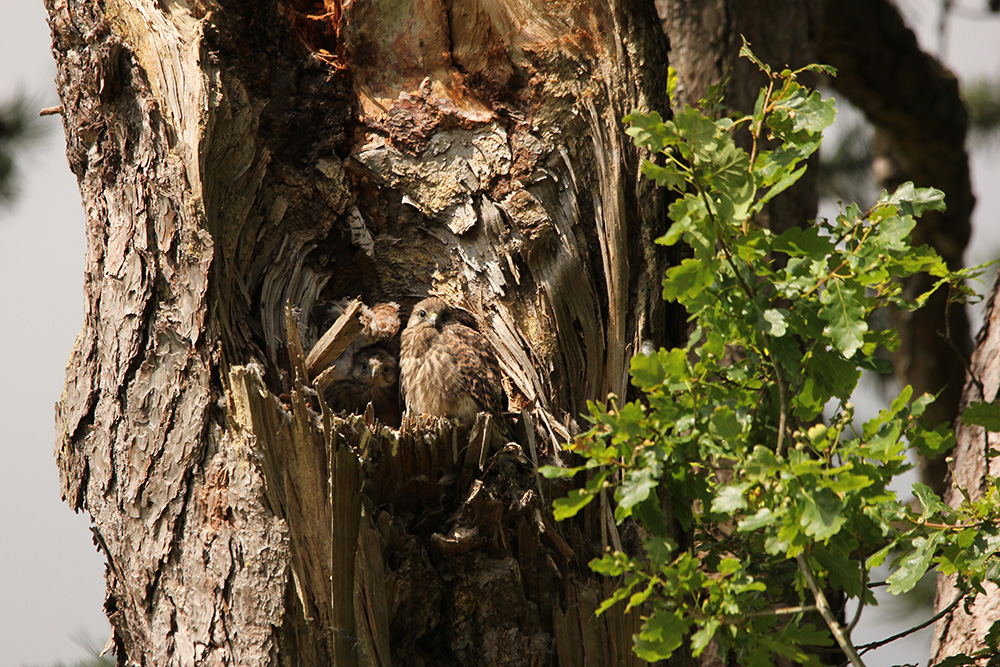
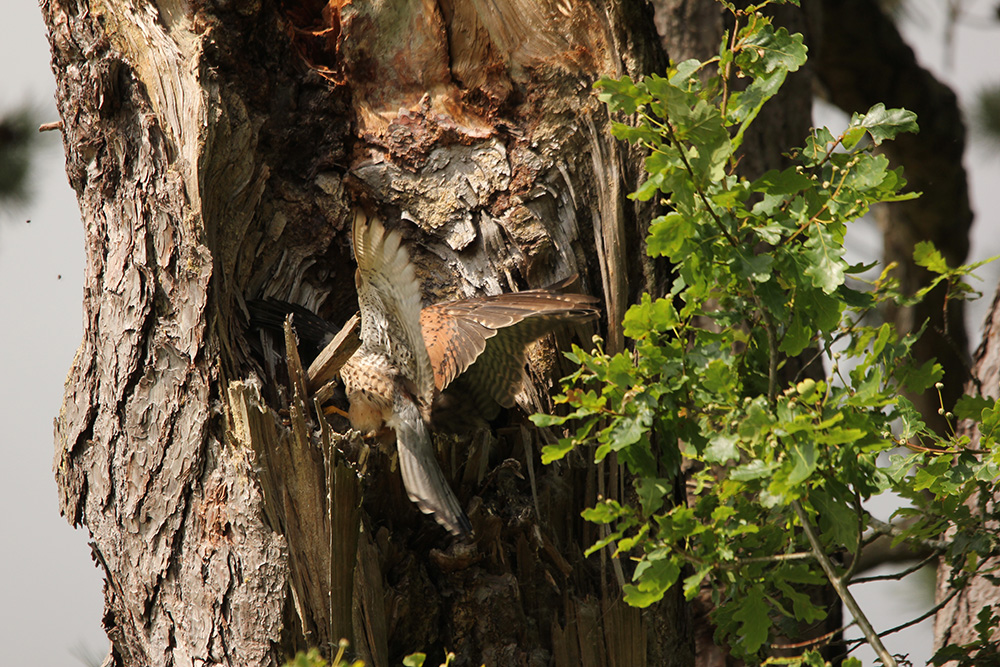
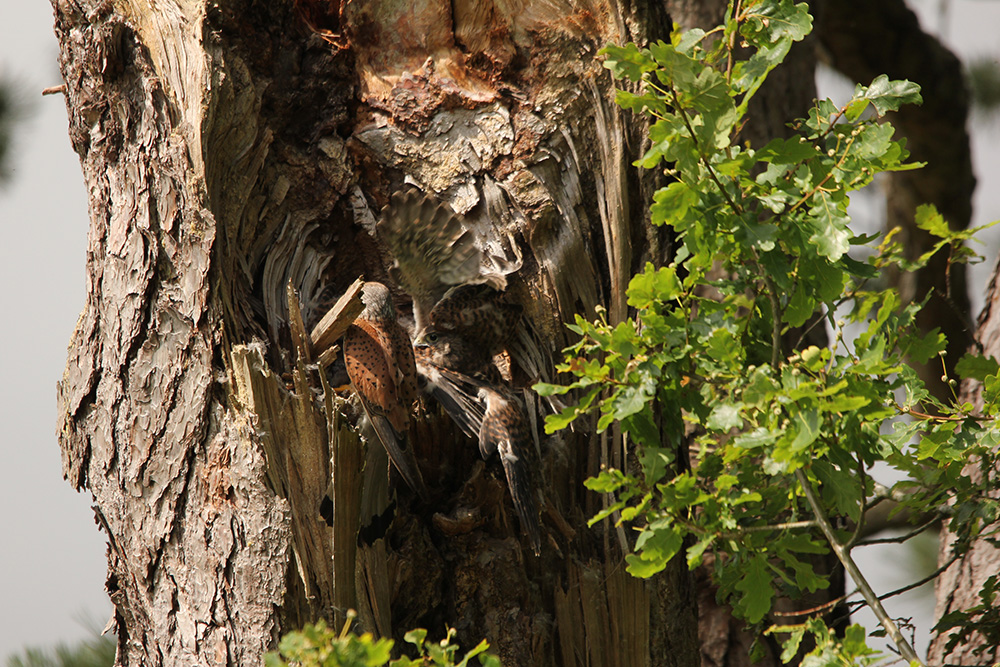
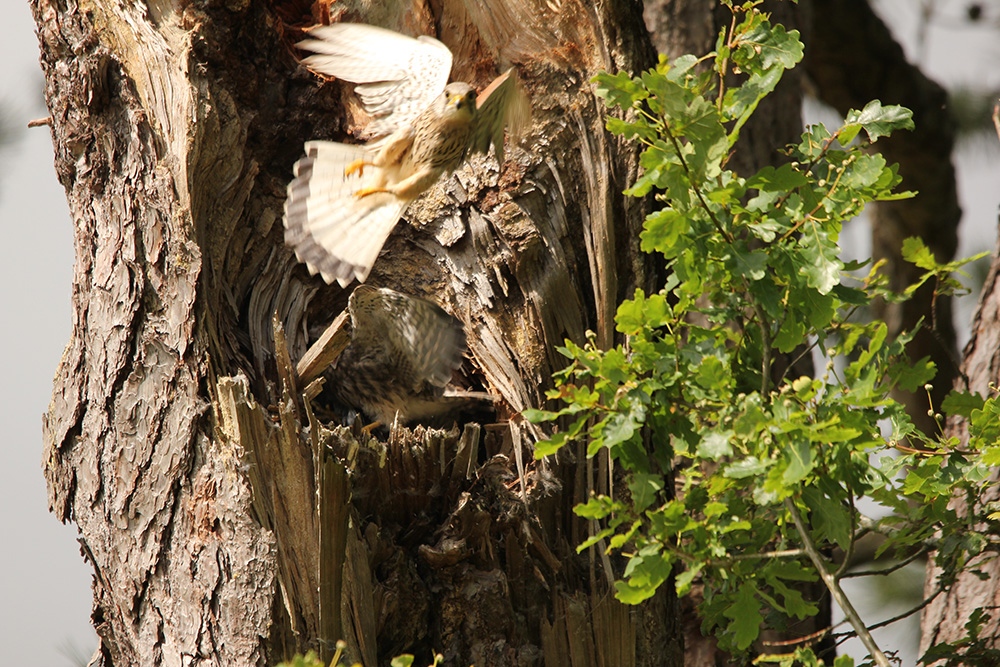
I stirred my stiffened bones, left the birds in peace and sought somewhere secluded to pick prickles out of my backside. And there was cowsh to wash off my trousers too.
I never did discover what was stalking me.
Over the next couple of days I re-encountered the eldest fledging taking his first excursions. He was often low down: on the ground or perched on a fence. One morning I watched him flapping around the base of his nest-tree, looking as if he wasn’t sure of the function of his wings. He was still making one hell of a noise. Then he seemed to have the bright idea of running up the tree-trunk propelled partially by his legs and partly by his wings. He managed to reach a branch a safe distance above the ground. He got his breath back and then continued flapping upwards until he was in the tree top a long way above the nest. He peered down nervously from up there, as if he was scared of heights. Poor thing.
There must be lots of leaps of faith when you are a young kestrel.
Meanwhile the sun reappeared and I was Brimstone-chasing again. And whenever a cloud moved in I found myself thinking about how much and how quickly animals have to learn in order to survive, although it wasn’t until December that the young kestrels had mastered the art of hovering.
